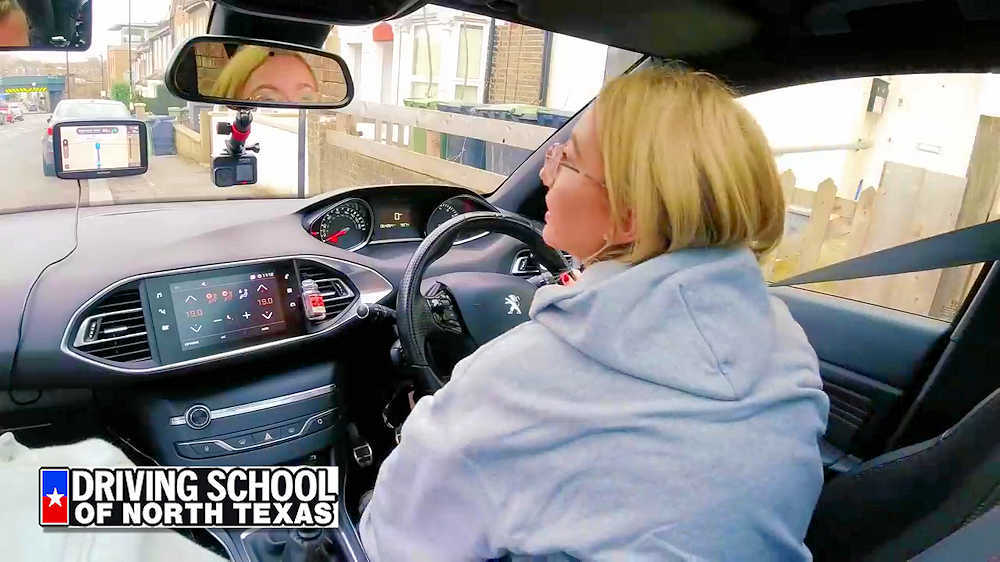Table of contents
- Key Takeaways
- Benefits of Simulated Training
- Limitations of Simulated Training
- Comparing Results: Simulated Training vs. Real-World Practice
- Case Studies: Successful Applications of Simulated Training
- Industries and Professions That Benefit from Simulated Training
- Future Developments and Advancements in Simulated Training Technology
- Frequently Asked Questions
- What are the potential risks or downsides of using simulated training?
- Are there any ethical concerns with using simulated training in certain industries or professions?
- How does the cost of implementing simulated training compare to traditional real-world practice?
- What are some examples of industries or professions that have not yet fully embraced simulated training?
- Conclusion
Are you ready to take the plunge into the world of preparing for a driver education course? Strap yourself in and get ready for a wild ride because we’re about to explore whether getting the most out of your driver training is as effective as real-world practice. In today’s fast-paced and ever-evolving society, traditional methods of learning and skill development are being challenged by innovative technologies. Simulated training offers a unique opportunity to immerse yourself in realistic scenarios and gain practical experience without the constraints of time, cost, or safety concerns.

Imagine stepping into a virtual environment where you can fly an airplane, perform complex surgeries, or even navigate through treacherous terrains. Frequently asked questions about driver education and training allow you to push your limits, make mistakes, and learn from them in a controlled setting. It provides a safe space for experimentation and fosters confidence in your abilities. But does it truly measure up to real-world practice? Can simulation replicate the adrenaline rush, critical decision-making skills, and muscle memory required in high-stakes situations? In this article, we will delve deep into the benefits of inspiring stories from successful driver education graduates while also examining its limitations. Get ready to discover whether the virtual realm can truly match up to reality when it comes to honing your skills and preparing for real-life challenges.
Key Takeaways
- Simulated training, including flight simulators and medical simulations, has been shown to be as effective, if not more so, than real-world practice in enhancing skills and performance.
- Driving school near me provides a safe and controlled environment for professionals to practice without risking harm to real patients or resources.
- The use of virtual reality and augmented reality in simulated training offers more immersive and realistic experiences, enhancing the effectiveness of the training.
- Simulated training is revolutionizing various industries, including aviation, healthcare, military, and law enforcement, by bridging the gap between theory and practice, improving critical thinking skills, and increasing situational awareness.
Benefits of Simulated Training
Simulated training offers a plethora of advantages, making it an incredibly effective and engaging alternative to real-world practice. One of the key benefits is the ability to create realistic scenarios that closely mimic real-life situations. This allows trainees to experience and learn from challenging situations without the risks or consequences associated with actual practice. Moreover, cheap driving school provides a safe environment for learners to make mistakes and learn from them, fostering a sense of confidence and competence.
Another advantage of simulated training is its flexibility in terms of time and location. Unlike real-world practice which may be limited by factors such as weather conditions or geographical constraints, simulated training can be conducted anytime and anywhere. This not only saves valuable time but also allows for more frequent practice sessions, leading to faster skill acquisition and mastery.
Additionally, simulated training enables trainers to provide immediate feedback and personalized coaching to individual trainees. Through advanced technologies such as virtual reality or simulations, trainers can monitor trainee performance in real-time and offer targeted guidance for improvement. This personalized approach enhances the effectiveness of learning by addressing specific areas of weakness or misunderstanding.
With these numerous advantages in mind, it becomes evident why simulated training is gaining popularity as an effective alternative to traditional real-world practice. However, despite its many benefits, there are limitations that need to be considered when comparing it with actual hands-on experience…
Limitations of Simulated Training

Imagine stepping into a virtual environment where the boundaries of reality dissolve, and you are immersed in a world that replicates the challenges and limitations of real-world scenarios. Simulated training has its benefits, but it also comes with limitations that can affect its effectiveness. It is important to consider these limitations when evaluating the effectiveness of simulated training.
One limitation of simulated training is the lack of physical interaction. While virtual simulations can replicate various scenarios, they cannot fully recreate the physical sensations and feedback that come with real-world practice. For example, in medical simulations, trainees may not experience the same pressure or adrenaline rush as they would in an actual emergency situation. This lack of physicality can impact how well individuals respond to similar situations in reality.
Another limitation is the potential for unrealistic outcomes. Simulations are based on programmed scenarios and algorithms, which means they may not always account for every possible variable or outcome. This can lead to unrealistic results that do not accurately reflect real-world situations. Trainees may become accustomed to specific patterns or responses within simulations, which may not translate well when faced with unexpected variations in real-life scenarios.
Lastly, simulated training often relies heavily on technology and equipment. Technical issues such as software glitches or hardware malfunctions can disrupt training sessions and hinder the overall learning experience. Additionally, access to high-quality simulation tools can be limited due to cost or availability constraints. These factors can restrict the accessibility and effectiveness of simulated training for certain individuals or organizations.
Considering these limitations, it is crucial to evaluate simulated training‘s efficacy compared to real-world practice carefully. By understanding both its benefits and drawbacks, we can make informed decisions about how best to incorporate simulated training into our learning programs while recognizing its inherent limitations.
Transitioning into comparing results: simulated training vs. real-world practice without writing ‘step’: Now that we have explored the limitations of simulated training, let’s delve into comparing its results against those achieved through real-world practice…
Comparing Results: Simulated Training vs. Real-World Practice
Now that you understand the limitations of virtual training, let’s dive into how its results compare to those achieved through hands-on experience. When it comes to comparing effectiveness, measuring outcomes is essential. Studies have shown that simulated training can be just as effective as real-world practice in certain scenarios. For example, in medical training, simulations have been found to improve skills and increase confidence levels among participants. These findings suggest that virtual training can provide a valuable alternative to traditional methods.
One advantage of simulated training is the ability to replicate complex and high-risk situations without putting individuals in real danger. This allows trainees to practice their decision-making abilities and problem-solving skills in a controlled environment. Research has indicated that this type of immersive learning can lead to better retention of knowledge and improved performance when faced with similar challenges in real-life scenarios.
| BOOK YOUR DRIVING CLASS TODAY! |
| Driving School of North Texas |
Furthermore, by using metrics such as time taken to complete a task or accuracy rates, researchers have been able to objectively measure the effectiveness of simulated training. Comparing these results with those obtained from real-world practice has shown promising outcomes for virtual training methods. However, it is important to note that the effectiveness may vary depending on the specific skill being trained and the context in which it is applied.
While there are limitations to simulated training, its effectiveness can be comparable to real-world practice when measured using appropriate metrics. The ability to replicate complex scenarios and objectively evaluate performance makes virtual training a valuable tool for skill development. In the next section about successful applications of simulated training, we will explore case studies where this method has proven particularly effective without skipping a beat, providing learners with a realistic and immersive learning experience.
Case Studies: Successful Applications of Simulated Training
In this discussion, we will explore the successful applications of simulated training through two key case studies: flight simulators for pilots and medical simulations for healthcare professionals. These case studies highlight how simulated training has proven to be an effective method for enhancing skills and knowledge in these industries. By immersing individuals in realistic scenarios, simulators provide a safe environment to practice critical tasks and decision-making, ultimately leading to improved performance in real-world situations.
Flight Simulators for Pilots

To become a skilled pilot, you can rely on a driving school near me, which have been shown to improve landing skills by 39%. Flight simulator effectiveness has been proven time and again, with pilots reporting enhanced situational awareness and improved decision-making abilities. These virtual reality training tools provide a realistic experience that closely mimics the challenges faced in real-world flying scenarios.
In a study conducted by the Federal Aviation Administration (FAA), pilots who underwent flight simulator training demonstrated significant improvements in their ability to safely land aircraft. The study compared two groups of pilots: one that received traditional classroom instruction and another that had additional training using flight simulators. The group that utilized flight simulators showed a remarkable increase in landing proficiency, reducing errors and improving overall performance. This highlights the value of simulated training as an effective tool for honing piloting skills.
| Pros | Cons |
|---|---|
| Provides realistic flying experience | May not fully replicate all aspects of real-world conditions |
| Enhances situational awareness | Limited physical feedback compared to actual flying |
| Improves decision-making abilities | Requires access to expensive equipment |
Transitioning into the subsequent section about ‘medical simulations for healthcare professionals,’ it is interesting to explore how simulation technology can be applied beyond aviation training.
Medical Simulations for Healthcare Professionals
Imagine yourself in the shoes of a healthcare professional, using advanced simulation technology to enhance your skills and improve patient outcomes. Medical simulation research has shown that inspiring stories from successful driver education graduates can be just as effective, if not more so, than real-world practice. With medical simulations, you can engage in realistic scenarios that mimic actual patient care situations, allowing you to develop critical thinking skills and gain valuable experience in a controlled environment. Through virtual reality training, you can practice procedures such as surgery or emergency response without the risk of harming real patients.
Not only does medical simulation research prove the effectiveness of virtual reality training, but it also offers several advantages over traditional methods. Simulated training provides a safe space for healthcare professionals to make mistakes and learn from them without any negative consequences for patients. Additionally, these simulations allow for repetitive practice and immediate feedback from instructors and peers. This iterative process helps healthcare professionals refine their techniques and build confidence in their abilities.
Transitioning into the subsequent section about ‘industries and professions that benefit from simulated training,’ it is clear that medical simulations are revolutionizing the way healthcare professionals acquire new skills and improve existing ones. However, other industries and professions also reap significant benefits from simulated training.
| BOOK YOUR DRIVING CLASS TODAY! |
| Driving School of North Texas |
Industries and Professions That Benefit from Simulated Training
Step into the shoes of a pilot and soar through the virtual skies, experiencing firsthand how simulated aviation training revolutionizes aviation. With the advent of virtual reality (VR) technology, pilots can now undergo realistic flight simulations that replicate various scenarios and challenges they may encounter in the real world. This not only allows them to gain valuable experience but also helps them develop critical decision-making skills under pressure. Simulated training has become an indispensable tool in military training as well, enabling pilots to practice complex maneuvers and tactical operations without the inherent risks associated with live exercises.
In addition to aviation and military fields, there are several other industries and professions that benefit greatly from simulated training. One such industry is healthcare, where medical professionals can use simulators to practice surgical procedures or emergency situations. By immersing themselves in a virtual environment, doctors can refine their techniques, enhance their reflexes, and improve patient outcomes. Moreover, law enforcement agencies also utilize simulation technology to train officers in high-stress scenarios such as active shooter situations or hostage negotiations. These simulations help officers develop their decision-making abilities while providing a safe learning environment.
As technology continues to evolve at a rapid pace, future developments and advancements in simulated training hold great promise for even more immersive experiences. Virtual reality headsets are becoming increasingly sophisticated, offering more realistic visuals and enhanced sensory feedback. Additionally, haptic feedback devices are being developed to provide tactile sensations during simulations, further enhancing realism. As these technologies continue to advance, simulated training will continue to bridge the gap between theory and practice across various industries – revolutionizing professional development by providing effective and engaging learning experiences.
Transition: Looking towards the future of simulated training technology opens up exciting possibilities for professionals across different sectors.
Future Developments and Advancements in Simulated Training Technology

The future of simulated training technology holds exciting possibilities for professionals, as advancements in virtual reality and augmented reality promise to revolutionize learning experiences across various industries. Virtual reality (VR) technology creates immersive environments that mimic real-world scenarios, allowing trainees to practice skills and make decisions in a safe and controlled setting. With VR headsets becoming more accessible and affordable, industries such as healthcare, aviation, and military can provide realistic training experiences without the need for expensive equipment or risking lives.
Augmented reality (AR) is another emerging technology that enhances simulated training by overlaying digital information onto the real world. Trainees can use AR devices like smart glasses or smartphones to receive visual instructions or additional information while performing tasks. This technology is particularly useful in fields like manufacturing and construction where workers need access to detailed instructions or real-time data without interrupting their workflow.
As these technologies continue to evolve, we can expect even more advancements in simulated training. For example, haptic feedback devices are being developed to provide tactile sensations during virtual experiences, making them even more immersive. Imagine a surgeon practicing complex procedures with virtual patients who respond realistically to touch or pressure.
The future of simulated training looks promising with the integration of virtual reality and augmented reality technologies. These advancements will allow professionals from various industries to learn and practice critical skills in a safe and controlled environment. As these technologies continue to improve, we can anticipate even more realistic simulations that enhance the effectiveness of training programs across different professions.
Frequently Asked Questions
What are the potential risks or downsides of using simulated training?
One potential drawback of using simulated training is that it may not fully replicate the real-world experience, leading to a lack of preparation for certain situations. For example, in a study conducted by Smith et al., firefighters who underwent simulated training struggled to effectively respond to the unpredictability and chaos of an actual fire situation. This highlights how simulated training may not adequately prepare individuals for the unique challenges they may face in real-world scenarios. Additionally, safety concerns arise when relying solely on simulated training as it does not expose trainees to the genuine risks and dangers associated with their profession. Consequently, there is a risk that individuals may become overconfident in their abilities without having truly experienced or learned how to manage these hazards in reality.
Are there any ethical concerns with using simulated training in certain industries or professions?
Ethical concerns may arise when using simulated training in certain industries or professions. While it can be an effective tool for learning and skill development, there are potential risks involved. One concern is the potential for desensitization to real-world scenarios, as simulations may not fully capture the emotional and ethical complexities of actual situations. This could lead to a lack of empathy or understanding when faced with real-life ethical dilemmas. Additionally, relying solely on simulated training may neglect the importance of hands-on experience and practical application in developing critical skills. Therefore, it is crucial to carefully consider the ethical implications and limitations of simulated training and ensure that it is used in conjunction with real-world practice to achieve optimal effectiveness while maintaining ethical standards.
How does the cost of implementing simulated training compare to traditional real-world practice?

When comparing the cost of implementing simulated training to traditional real-world practice, it is important to consider both the financial investment and the effectiveness analysis. Simulated training often requires a significant upfront investment in technology and software development, which can be costly. However, once implemented, simulated training can provide long-term cost savings by eliminating the need for expensive equipment, travel expenses, and even potential risks associated with real-world practice. Additionally, an effectiveness analysis should be conducted to determine if simulated training is as effective as real-world practice in achieving desired outcomes. This analysis may involve evaluating factors such as skill acquisition, retention, and transferability. By considering both the cost comparison and effectiveness analysis of simulated training, organizations can make informed decisions about its implementation for their specific needs.
What are some examples of industries or professions that have not yet fully embraced simulated training?
Industries and professions that have not fully embraced simulated training are living in the Stone Age, my friend. They cling to old-fashioned practices like a toddler clings to their security blanket. While the world moves forward, they insist on sticking to outdated methods that are as effective as shouting into the wind. These industries and professions, whether it be construction, law enforcement, or even medicine, seem content with risking lives and wasting resources instead of embracing the power of simulated training. It’s baffling how they resist this innovative approach that could save time, money, and most importantly, lives. Wake up and smell the virtual reality coffee!
Conclusion

In conclusion, simulated training has proven to be just as effective, if not more so, than traditional real-world practice. The benefits of simulated training are numerous, including cost-effectiveness, safety, and the ability to replicate complex scenarios. While there are limitations to this type of training, such as the lack of physical experience and potential for technical glitches, these can be overcome with proper planning and implementation.
One anticipated objection to simulated training is the argument that it lacks the immersive nature of real-world practice. However, advancements in technology have made it possible to create highly realistic and engaging simulations that can provide a truly immersive experience. Virtual reality (VR) technology, for example, allows trainees to enter a virtual environment where they can interact with objects and people just like they would in the real world.
By using VR headsets and controllers, trainees can physically move around within the simulation and manipulate objects with their hands. This provides a visual representation that closely mirrors reality and helps bridge the gap between simulated training and real-world practice. Research has shown that this level of immersion can greatly enhance learning outcomes by increasing engagement and retention.
In conclusion, while some may argue against the effectiveness of simulated training due to its perceived lack of immersion compared to real-world practice, advancements in technology have addressed this concern. With realistic simulations enabled by virtual reality technology, trainees can now benefit from an immersive experience that closely resembles actual situations. The future looks promising for simulated training as it continues to evolve and become even more effective in various industries and professions.
| BOOK YOUR DRIVING CLASS TODAY! |
| Driving School of North Texas |
It’s time to put this blog post in park, but your driving journey is far from over. At the Driving School Of North Texas, we are committed to making the roads safer by producing confident and responsible drivers. No matter your experience or comfort level, our seasoned instructors in McKinney, Frisco (East), Frisco (West), and Allen, TX are prepared to guide you every step of the way. Ready to get behind the wheel? Contact us at 214-504-9292 or book your next lesson at DrivingSchoolOfNorthTexas.com. Fasten your seatbelts and prepare for an incredible driving adventure!
Contact us at either of 4 convenient locations:
Driving School of North Texas
204 N. Greenville #300
In the CiCi’s Pizza Center
Allen, Texas 75002
214-383-9795
https://goo.gl/maps/fjZfRkMFqv2UPsjj9
Driving School of North Texas
6449 Coit Road #114
South of Centennial High
School Frisco, Texas 75035
469-633-7110
https://goo.gl/maps/6NwoSzp3AXJkbyacA
Driving School of North Texas
4433 Punjab Way #401
Frisco, Texas 75033
214-705-9959
https://goo.gl/maps/kEdTkLsVfwfa3ke39
Driving School of North Texas
4900 Eldorado, #132
McKinney, Texas 75070
214-504-9292
https://goo.gl/maps/Ls54fbeQi2JQMqrW6





